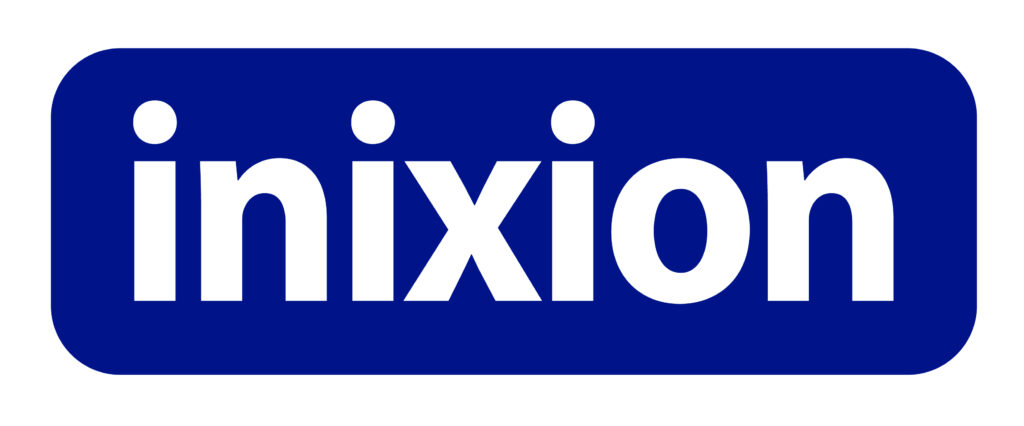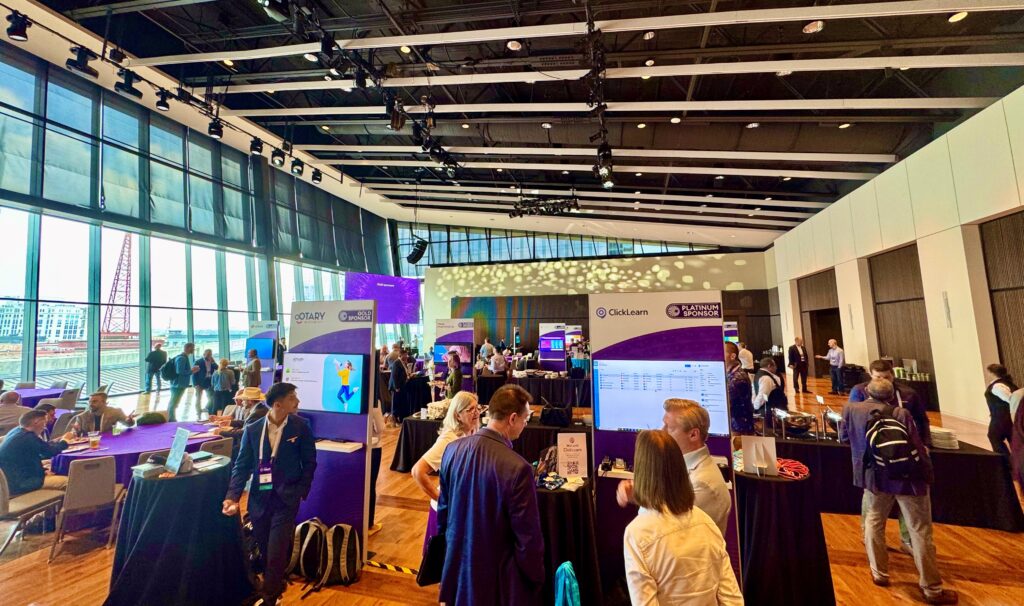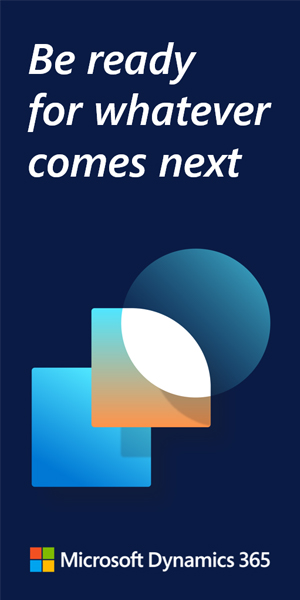 In the heart of Nashville’s Country Music Hall of Fame, where legends are made and stories are told, Microsoft’s Jennifer Martinez delivered a performance that would make any country star proud. But instead of guitars and harmonicas, her instruments were Azure, Copilot, and artificial intelligence—and the song she sang was one of enterprise transformation that has ERP leaders across North America taking notes.
In the heart of Nashville’s Country Music Hall of Fame, where legends are made and stories are told, Microsoft’s Jennifer Martinez delivered a performance that would make any country star proud. But instead of guitars and harmonicas, her instruments were Azure, Copilot, and artificial intelligence—and the song she sang was one of enterprise transformation that has ERP leaders across North America taking notes.
Speaking at IFS Connect North America 2025, Martinez, Microsoft’s Data and AI Strategist and Business Innovation Partner, didn’t just present another AI pitch deck. She laid out a strategic framework that cuts through the noise of “AI everything” to deliver practical guidance for businesses wrestling with where to start their generative AI journey.
The Four Pillars: A Strategic Framework for AI Success
Martinez introduced Microsoft’s four-category framework that organizations should balance across their AI initiatives—a strategic approach born from conversations with tens of thousands of businesses across industries, from utilities to retail to government.
The first pillar, enriching employee experiences, hits closest to home for most ERP users. “How do we ease the burden on an employee as they’re doing their daily job?” Martinez asked the Nashville audience. “How do we make the information they need easier to find? How do we help someone get up to speed faster?” This isn’t just theoretical—it’s about making that purchase order easier to locate or helping new employees navigate complex ERP systems without drowning in training manuals.
The second pillar, reinventing customer engagement, showcases AI’s transformative potential through real customer success stories. Martinez highlighted Harding, a manufacturer of industrial components, whose customers previously spent hours or even weeks designing custom connectors through a complex back-and-forth process. By implementing an AI-based solution that references their organized product catalog, customers now receive recommendations within minutes instead of weeks. The result? Streamlined processes, fewer returns, reduced errors, and dramatically improved customer satisfaction.
Reshaping business processes forms the third pillar, and here Martinez emphasized a critical distinction that echoes MIT research presented elsewhere at the conference. There’s a fundamental difference between using AI tools to slightly improve existing processes versus redesigning processes to be “AI-first.” She pointed to Michelin’s comprehensive initiative and Microsoft’s own internal transformation as examples of companies that stopped asking “How can I slightly improve my 12-step process?” and started asking “How can I make this process AI-first with humans engaged where they add the most value?”
The fourth pillar, bending the curve on innovation, demonstrates AI’s ability to accelerate R&D and product development. Companies are using AI to analyze factual content from engineering teams, enabling newer teams to reference and build upon previous work faster. The result is shorter time-to-market for new products and more efficient innovation cycles.
The Three-Stage Implementation Roadmap
While the four pillars provide strategic direction, Martinez offered a practical three-stage roadmap for implementation that directly addresses the most common question she hears: “I have so many ideas. Where do we start?”
Stage One: Embrace Commercial Copilots
“Start with commercially available AI,” Martinez emphasized. “Don’t test the technology to see if it’s performing—look at what it’s capable of now.” This isn’t about being a technology pioneer; it’s about maximizing current capabilities while positioning for future enhancements.
The confusion around “copilot” terminology received much-needed clarification. While Microsoft has specific copilot products—from public-facing internet search assistance to Microsoft 365 Copilot working within corporate walls—the term extends far beyond Microsoft’s offerings. The IFS.ai copilot represents this broader ecosystem where commercially available AI solutions provide the foundation for enterprise transformation.
Stage Two: Develop Differentiated AI Solutions
After maximizing ready-to-go copilots, organizations can explore differentiated AI solutions tailored to their specific needs. This is where partnerships like the one between Microsoft and IFS become crucial. As Martinez noted, most organizations live in a world of “four clouds and 72 software processes” that need to work together seamlessly.
This stage leverages tools like Microsoft’s Copilot Studio for low-code, no-code automation and AI integration, enabling organizations to bridge gaps between systems and customize solutions for their unique requirements.
Stage Three: Integrate Security and Governance
Throughout implementation, Martinez stressed that security shouldn’t be an afterthought. “The criminals are using AI and getting smarter,” she warned. “We can’t sit back and not be prepared.” This means implementing responsible, ethical, and secure AI practices from the beginning, not bolting on security measures later.
The Emerging Agentic Frontier
Martinez introduced the concept of AI agents as an evolution beyond traditional copilots, distinguishing between personal AI support (copilots) and business process support (agents). The progression from retrieval agents (“go find me relevant content about the last six orders”) to task-based agents (“I just received an invoice, fill it out for me using my known fields”) to autonomous agents represents the future of AI in enterprise environments.
The most exciting development? Agent-to-agent communication, where specialized AI systems collaborate autonomously. Martinez painted a picture of interconnected agents translating content, checking for service outages, analyzing patterns, and preparing customer service scripts—all without human intervention until human judgment is needed.
The Partnership Imperative
What emerged most clearly from Martinez’s presentation was the critical importance of strategic partnerships in AI transformation. The Microsoft-IFS alliance exemplifies how technology providers can combine raw AI capabilities with industry-specific solutions to deliver practical business value.
“Both of our companies have the philosophy: make the system open, make it composable, make it work for the real world that you live in,” Martinez explained. This approach acknowledges that successful AI implementation isn’t about replacing existing systems but about making them work better together.
What this means for ERP Insiders
Start with employee experience, scale through data. ERP leaders should prioritize AI initiatives that directly improve daily user experiences before tackling complex process automation. With more than 230,000 organizations—including 90% of the Fortune 500—already using Microsoft’s Copilot Studio to build AI agents and automations, the evidence is clear that starting with commercially available AI solutions provides immediate value while building organizational AI literacy. Focus your initial investments on IFS.ai capabilities that help users navigate complex ERP workflows, find information faster, and reduce manual data entry. This approach builds user confidence and demonstrates ROI while your team develops the skills needed for more sophisticated AI implementations.
Embrace process redesign, not just process improvement. The most significant AI gains come from rethinking entire business processes rather than incrementally improving existing workflows. Companies like Lumen have reduced seller quote generation time from four hours to 15 minutes, projecting annual savings worth $50 million, by taking an AI-first approach to process design. ERP leaders should identify high-volume, knowledge-intensive processes—like order management, procurement approvals, or service scheduling—and reimagine them with AI agents handling routine decisions while humans focus on exceptions and relationship management. Consider vendors like IFS who offer composable, open architectures that support radical process transformation rather than just cosmetic AI additions.
Build security-first AI governance from day one. As AI adoption accelerates, security and governance can’t be afterthoughts in ERP environments handling sensitive business data. A Morgan Stanley study found that 94% of CIOs expect to adopt Microsoft generative AI products within the next year, up from 63% in Q4 2023, creating both opportunity and risk. Establish AI governance frameworks that define data access boundaries, audit trails, and human oversight requirements before implementing AI agents in critical ERP processes. Leverage partners like Microsoft and IFS to ensure AI solutions comply with your industry’s regulatory requirements and implement proper data classification to prevent AI models from accessing inappropriate information while still enabling powerful automation capabilities.






